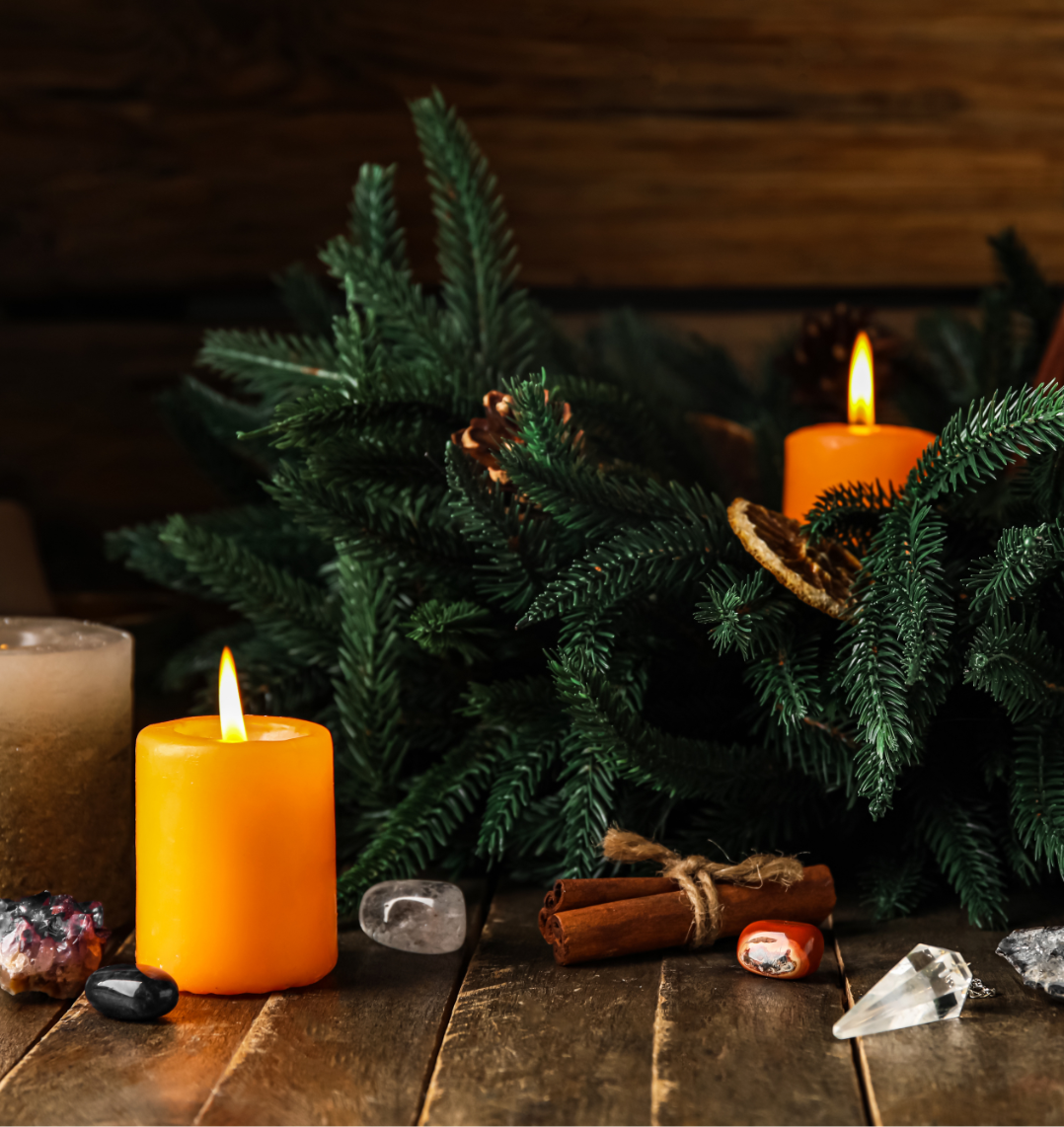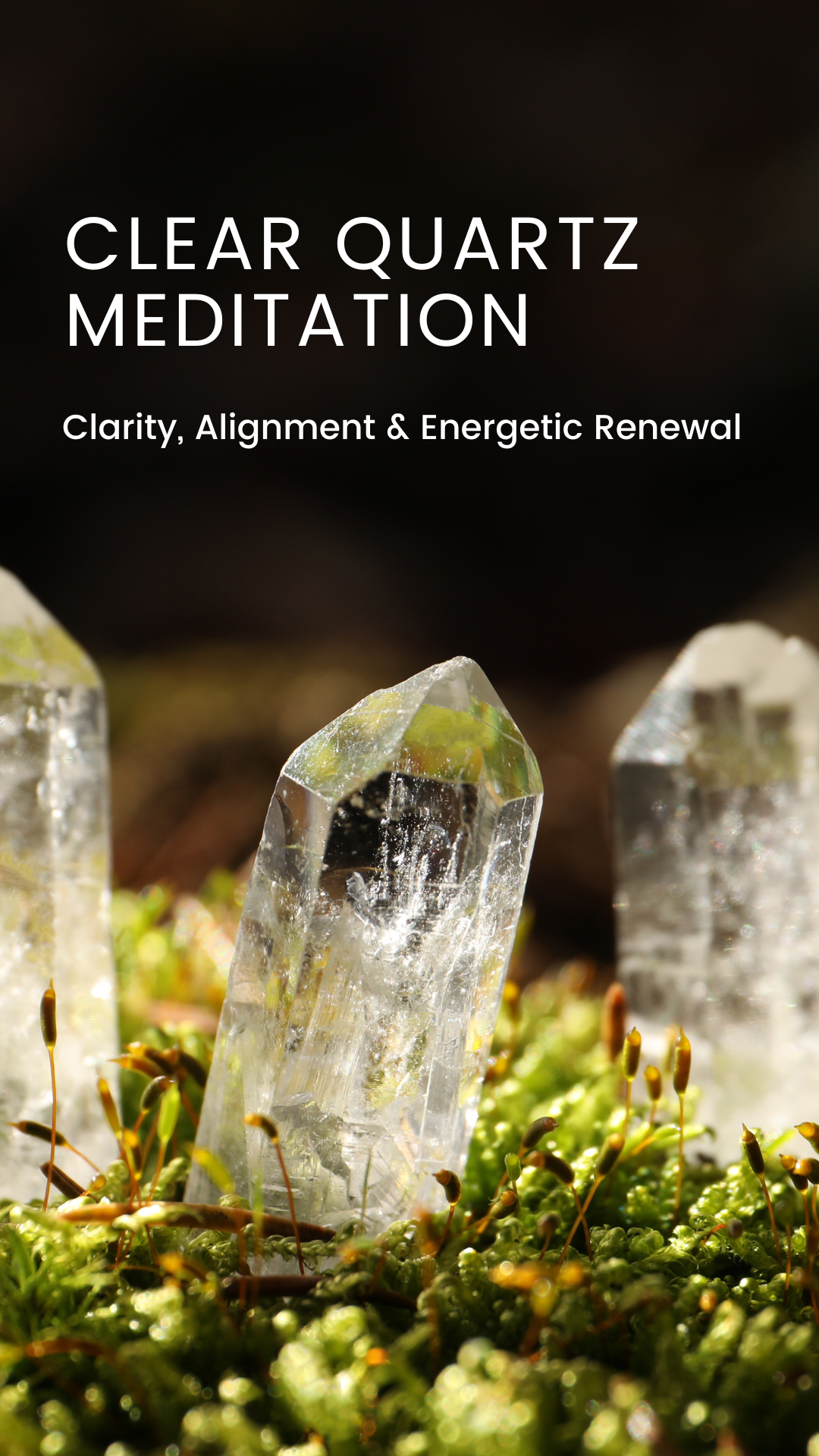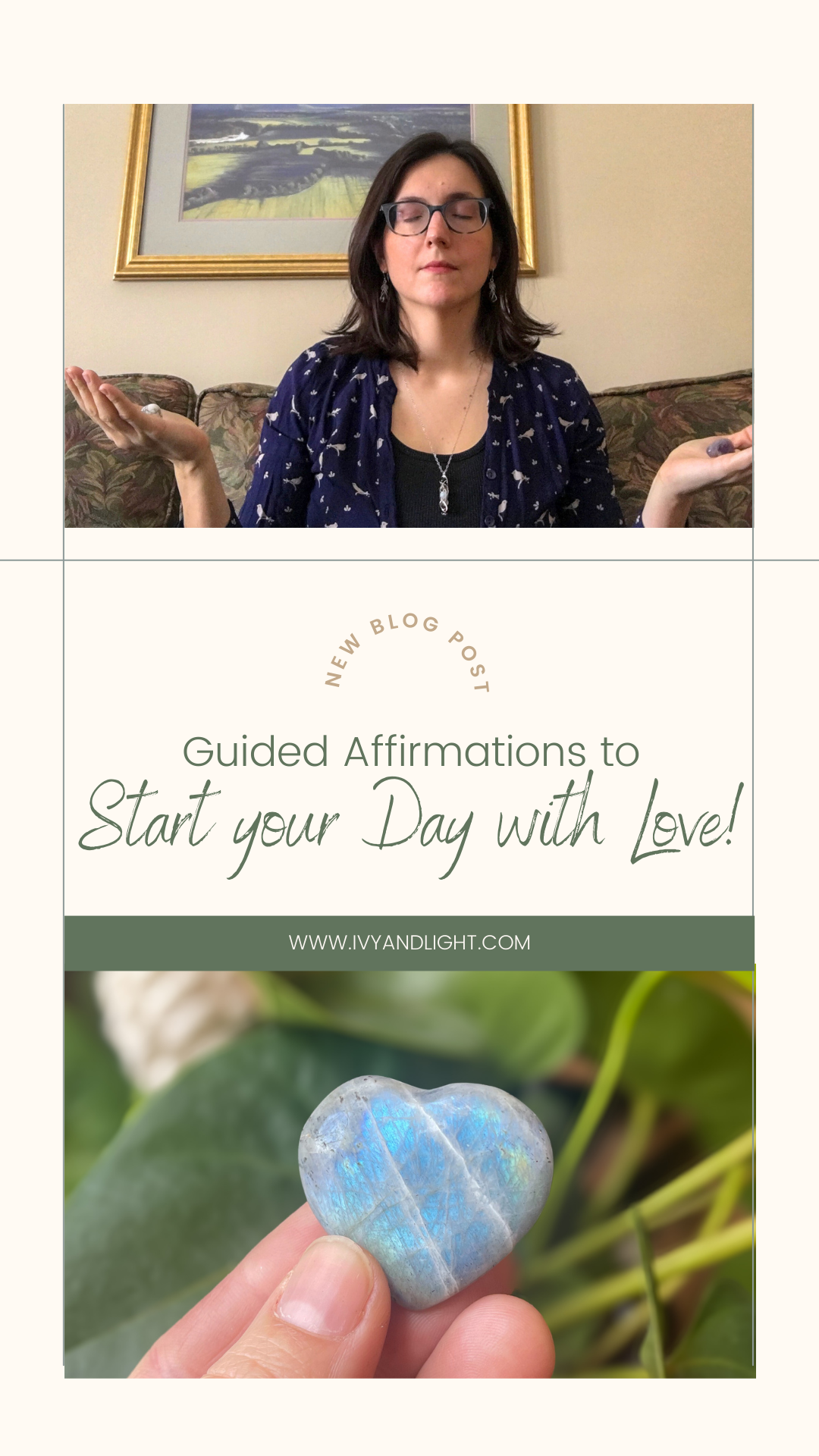Celebrating the Winter Solstice: Rituals, Reflection, and Crystals
As the longest night of the year unfolds, the Winter Solstice offers us a moment of profound stillness—a time to honor the cycles of nature, reflect on the year behind us, and welcome the light slowly returning. This special day is an opportunity to realign with nature and nurture our spiritual growth. Whether through rituals, crystals, or quiet moments of meditation, there are many ways to honor the magic of the solstice.
The Winter Solstice marks the shortest day and longest night of the year, symbolizing the return of the light.
In the Northern Hemisphere, the Winter Solstice usually occurs between December 20th and December 23rd, with December 21st being the most common date.
In the Southern Hemisphere, the Winter Solstice falls between June 20th and June 23rd, with June 21st being the most widely recognized date.
This is a powerful time to reflect, release the old, and set intentions for the new year, aligning with the natural cycle of light and dark. To set the tone, we invite you to reflect on Susan Cooper’s beautiful poem, The Shortest Day, which reminds us of the timeless rituals and shared humanity that mark this special time:
The Shortest Day, by Susan Cooper
And so the Shortest Day came and the year died
And everywhere down the centuries of the snow-white world
Came people singing, dancing,
To drive the dark away.
They lighted candles in the winter trees;
They hung their homes with evergreen;
They burned beseeching fires all night long
To keep the year alive.
And when the new year’s sunshine blazed awake
They shouted, reveling.
Through all the frosty ages you can hear them
Echoing behind us—listen!
All the long echoes, sing the same delight,
This Shortest Day,
As promise wakens in the sleeping land:
They carol, feast, give thanks,
And dearly love their friends,
And hope for peace.
And now so do we, here, now,
This year and every year.
Welcome, Yule!
Winter Solstice Rituals and Recommendations
1. Light a Candle for Reflection
The solstice is a time to celebrate the returning light. Lighting a candle symbolizes this renewal, inviting clarity and peace into the coming year. For an enhanced ritual, use our Crystal Spiral Affirmation Deck to pull a card and meditate on its message. Each card’s affirmation is infused with Reiki energy to help guide your intentions.
2. Create a Solstice Altar
An altar helps ground your practice and creates a focal point for your solstice ceremony. Incorporate:
Snowflake Obsidian for protection and release of the past. Snowflake Obsidian is special because its white “snowflakes” provide crown chakra healing energy for purity, wisdom, and divine connection.
Carnelian for vitality and inner strength. Carnelian resonates with the fire element and brings warmth, energy, and motivation. It supports renewal and helps you align with the return of the light, empowering you to set intentions with passion and courage for the year ahead.
Clear Quartz to amplify your intentions. I personally love using our Clear Quartz Roller Bottle for my rituals. Fill this bottle with your favorite essential oil blend to set the mood for your altar space. The Reiki-infused clear quartz rollerball amplifies your intentions while delivering the calming benefits of essential oils. Apply your blend during your ritual to ground yourself and focus on your goals for the coming year.
Seasonal Decorations: Greenery, such as Evergreen branches, pinecones, or other elements of nature, symbolize resilience and growth. Dried Orange Slices represent the sun and symbolize the return of longer days and the renewal of energy. Cinnamon Sticks are associated with warmth and protection. They bring a comforting scent and signify the warmth of the sun.
Creating an altar is a deeply personal act, so feel free to follow your intuition and include items that hold meaning for you. Let it be a space where you can align with the solstice energy and welcome the light with an open heart.
3. Reflect on Your Year
The Winter Solstice is the perfect time to pause and reflect on the journey of the past year. What lessons have shaped you? What challenges have you overcome? What joys have brought you closer to your truest self?
To guide this reflective process, we invite you to revisit (or complete!) our Year in Review Workbook. This free resource helps you map out your growth, release what no longer serves you, and set meaningful intentions for the year ahead.
If you haven’t downloaded it yet, it’s not too late! Click here to access your workbook and carve out some sacred time to document your reflections and dreams.
The Historical Significance of the Winter Solstice
The Winter Solstice has been celebrated across cultures and centuries as a turning point in the year—a moment when the longest night gives way to the gradual return of the sun. For ancient civilizations, this celestial event carried deep symbolic meaning, marking the renewal of life, hope, and light.
Ancient Celebrations Across the Globe
Yule (Northern Europe): The origins of many modern Winter Solstice traditions can be traced to the Norse festival of Yule. People celebrated by lighting candles, burning the Yule log, and adorning their homes with evergreen branches to symbolize eternal life. Feasting and gift-giving were also part of this joyous time.
Saturnalia (Ancient Rome): This Roman festival honoring Saturn, the god of agriculture, took place in December and involved days of revelry, gift exchanges, and a temporary suspension of social hierarchies.
Dongzhi Festival (China): Rooted in yin-yang philosophy, this celebration acknowledges the balance between dark and light. Families gather to feast and make dumplings as they prepare for the lengthening days ahead.
Inti Raymi (Inca Empire): Although held during the Southern Hemisphere's winter solstice, this festival honored Inti, the Sun God, and celebrated the renewal of life as the sun began its return.
Sacred Monuments and the Solstice
Stonehenge (England): This iconic prehistoric site aligns with the solstice sun, with its stones framing the sunrise on the winter solstice and sunset on the summer solstice. It’s believed to have been a site of ancient rituals and gatherings.
Newgrange (Ireland): This 5,000-year-old passage tomb is illuminated by the rising sun on the Winter Solstice, a stunning testament to the early understanding of celestial events.
A Timeless Celebration of Light
These ancient celebrations remind us that the Winter Solstice is not only about the cycles of the sun but also about our collective need for hope, connection, and renewal. Today, as we light candles, meditate, and honor this sacred time, we continue a tradition that has united humanity for thousands of years.
Through the ages, the Winter Solstice has invited people to reflect on life’s rhythms and embrace the promise of light returning—a message that resonates just as powerfully today.
As the poem reminds us, the Winter Solstice is a time of hope and connection:
"As promise wakens in the sleeping land,
They carol, feast, give thanks,
And dearly love their friends,
And hope for peace."
We hope these rituals inspire you to create your own meaningful Winter Solstice traditions. Let us welcome the returning light together!



















